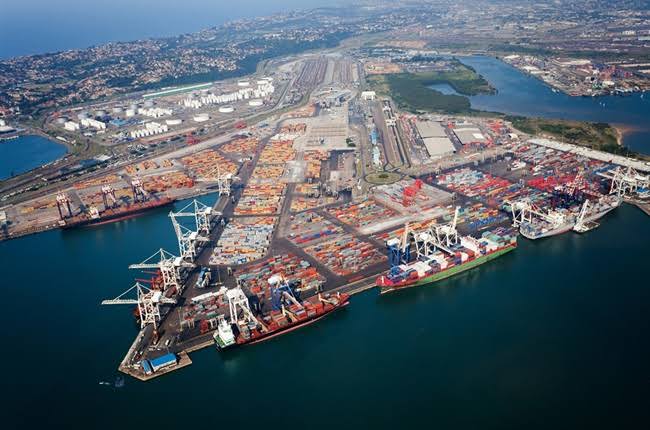
Transnet says it will take seven to 15 weeks to clear the 63 vessels at anchor off the Port of Durban, with some importers saying delays in offloading containers mean they will miss the Christmas rush.
Of these 63 vessels, 20 are destined for the Durban Container Terminals (DCT) Pier 1 and Pier 2, managed by Transnet Port Terminals (TPT).
In a statement on Friday, Transnet said several initiatives had been implemented to clear the backlog. “With all initiatives employed, it would take Pier 1 seven weeks to clear the backlog and 15 weeks for Pier 2 – or less,” the statement said.
Plans are in place to ramp up Pier 2’s container handling from 2 500 to 4 000 containers a day over three months. There are also plans to increase Pier 1’s container handling from 1 200 to 1 500 containers a day.
Last week, Moneyweb reported on the ever-lengthening queue of ships at anchor outside Durban, with ships taking three to four times the average time to offload cargo.
The world’s largest container shipping company, MSC, recently advised clients that it would impose a “congestion surcharge” due to the backlog and difficult operating conditions at SA ports.
In response to Moneyweb questions, Transnet said it had deployed industrial engineers to maximise berth performance at the container terminals while engaging with original equipment manufacturers (OEMs) and second-hand cargo equipment suppliers to address the short-term challenges at the terminals.
Also on Friday, Transnet said it may suspend the processing of trucks bringing cargo into its Richards Bay port via road in northern KwaZulu-Natal.
This is being done in the interest of public safety on the roads in the uMhlathuze Local Municipality. Only trucks whose vessels have been already nominated will be processed.
Earlier this year the Minerals Council of SA estimated more than 100 000 trucks a month were crowding SA ports, including Maputo in Mozambique, due to Transnet’s inability to ship sufficient volumes via train. A proper functioning rail system could replace 400 trucks with a single train.
